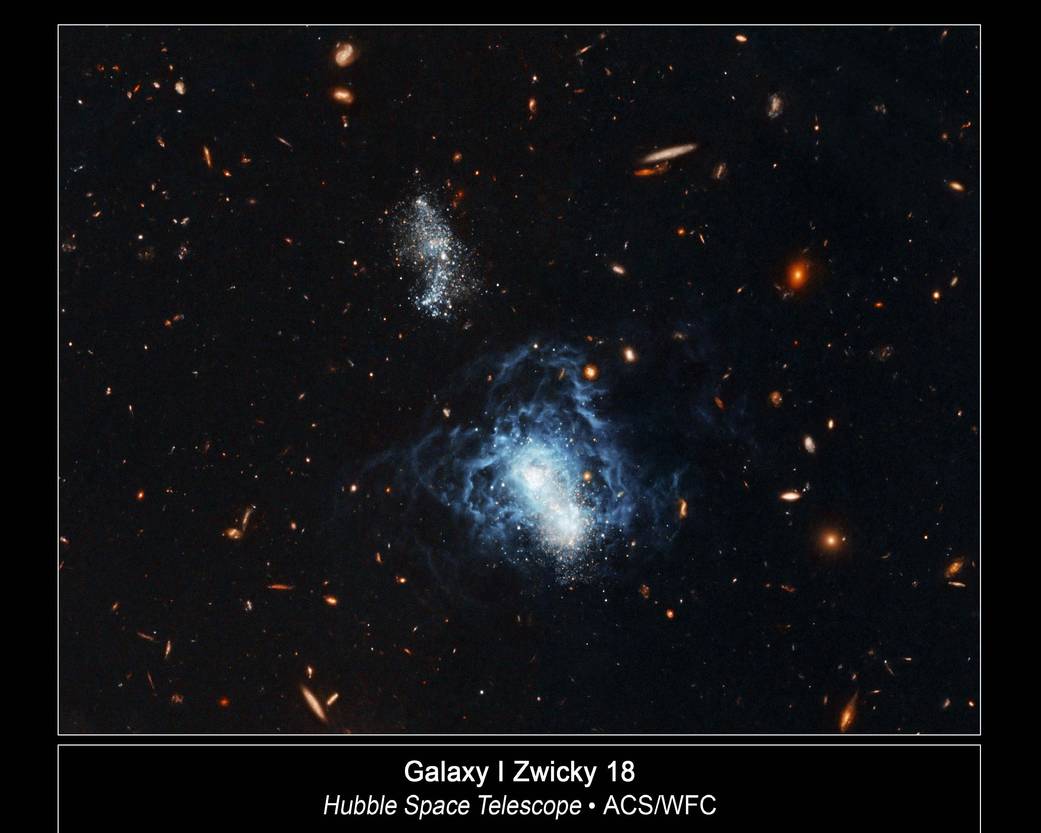I Zwicky 18’s youthful appearance, resembling that of galaxies typically found only in the early universe, belies its true age. However, the Hubble telescope has found faint, older stars within this galaxy, suggesting that it formed at the same time as most other galaxies.
I Zwicky 18, a dwarf irregular galaxy, is much smaller than our Milky Way Galaxy. The concentrated bluish-white knots embedded in the heart of the galaxy are two major starburst regions where stars are forming at a furious rate. The wispy blue filaments surrounding the central starburst regions are bubbles of gas that have been blown away by stellar winds and supernovae explosions from a previous generation of hot, young stars. This gas is now heated by intense ultraviolet radiation unleashed by a new generation of hot, young stars.
A companion galaxy lies just above and to the left of I Zwicky 18. The companion may be interacting with I Zwicky 18 by gravitationally tugging on the galaxy. The interaction may have triggered the galaxy’s recent star formation that is responsible for the youthful appearance. Besides the bluish-white young stars, white-reddish stars also are visible in both I Zwicky 18 and its companion. These stars may be as old as 10 billion years. The reddish extended objects surrounding I Zwicky 18 and its companion are ancient, fully formed galaxies of different shapes that are much farther away.Image Credit: NASA, ESA, and A. Aloisi (Space Telescope Science Institute and European Space Agency, Baltimore, Md.)
2 min read



























